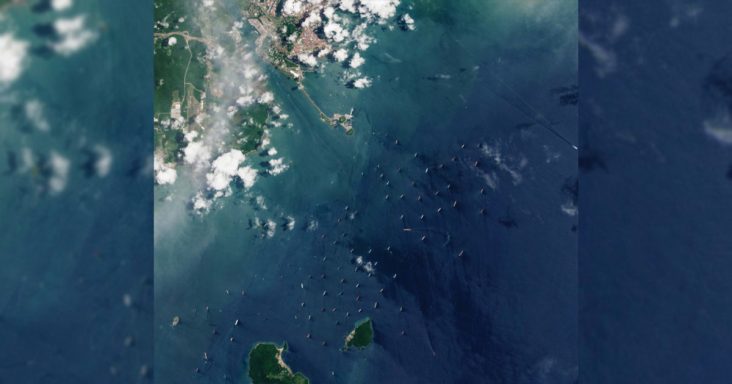Panama, Suez Canal issues likely to impact costs for consumers, farmers
by May 1, 2024 1:24 pm 706 views

During the 1800s, there were many failed attempts to build a canal across points in Central America. To trade goods from the Atlantic to Pacific, seafarers had to take a treacherous path around the tip of South America, traveling close to the rough seas near Antarctica.
Disease, political strife, a lack of funds and other factors thwarted numerous attempts by multiple countries to build a canal that would be far safer and cut in half the travel routes between the two oceans. The builder of the Suez Canal tried for nine years to build one, but gave up after a myriad of diseases killed at least 20,000 workers.
In 1903, the U.S. decided to build the Panama Canal — primarily pushed by President Theodore Roosevelt — and by 1914 it was complete, according to the U.S. State Department.
The safer travel and massive reduction in distance led to more free flowing commerce around the world for more than a century. The Panama and Suez canals have had significant reductions in traffic due to drought in one instance and war in the other.
“There are two maritime disasters going on simultaneously. One of them is political and the other one is environmental,” said Ryan Loy, extension economist for the University of Arkansas System Division of Agriculture. “They both have a large impact on the global supply chain.”
According to the United Nations Conference on Trade and Development, monthly transits through the Panama Canal dropped 49% since October 2021, while Suez transits were down 42% in the same period.
Panama Drought
The Panama Canal, connecting the Atlantic and Pacific oceans, is critical to trade. In 2023, the canal saw more than 14,000 transits of commercial vessels carrying more than 285 million tons of cargo. The canal relies on fresh water from the Gatun Lake to move ships through its locks. Last year, drought halved the amount of water flowing into the reservoir.
Last October, canal authorities began reducing traffic from 32 transits a day to 24. Transits were then cut to 22 in December. In January, the Panama Canal Authority raised the number of transits back to 24, a level it planned to keep through April. When water levels will return to normal to allow for normalized cargo traffic is unknown.
“Panama is basically dealing with the same thing we were seeing with the Mississippi River last fall,” said Loy.
Drought along the Mississippi River dropped it to record lows in September 2023.
The reduction in transits has traffic backing up on both sides of the isthmus, which means shippers can either wait or choose to take the longer, more dangerous route around South America. It also means some commodities will be loaded onto trains or trucks instead.
“The long layovers affect the quality of the commodities, especially if you have something like live beef cattle or live pigs,” Loy said.
There are also the additional costs of the energy required to keep a ship’s crew and systems operating while standing still.
Businesses and consumers in the U.S. will be directly impacted by trade disruptions through the canal. The International Trade Administration estimates that 72% of all traffic that comes through the Panama Canal is either coming or going to a U.S. port.
Conflicts Near The Suez
The Suez Canal is a key trade route connecting the Mediterranean and Red Seas. Its construction in the 1800s meant shipping between Europe and East Asia no longer had to go all the way around Africa.
Houthi missile and drone attacks in recent weeks along the Suez have prompted many shipping companies to avoid the route, with container shipping dropping 67% as of late January, according to the trade journal “Captain.” In 2019, the most recent figures available from the Suez Canal Authority, it had 18,880 ships bearing 1.03 billion tons of cargo.
“According to the United Nations Conference and Trade and Development, more than a fifth of the world’s container trade went through the Suez,” Loy said. “That included natural gas, oil and materials needed for manufacturing.”
Global shipping and logistics company Maersk began using a different trade route in March stating “in the interest of safety for our vessels, crew, and customers’ cargo, all vessels previously due to transit the area have been diverted south around the Cape of Good Hope for the foreseeable future. While we hope for a sustainable resolution in the near future and do all we can to contribute towards it, we encourage customers to prepare for disruptions to persist in the global network. Transit times between the U.S. East Coast and India and the Middle East, and vice versa, will be extended by one or two weeks by this change.”
With the issues at the two canals, plus Black Sea disruptions because of the Russian invasion of Ukraine, costs are rising.
The United Nations said container freight rates on Asia–Pacific to Europe routes have risen sharply since November. Average container shipping spot rates from Shanghai in early February 2024 more than doubled, up by 122% compared to early December 2023, the UN reported. The rates from Shanghai to Europe more than tripled, jumping by 256%.
“While we have not seen much price impact yet, eventually the high cost of transportation will work its way back to farmers and consumers,” Loy said.
In 2021, when the Ever Given cargo ship ran aground and blocked all traffic in the Suez Canal for six days, Lloyd’s List Intelligence said that “rough calculations suggest westbound traffic is worth around $5.1 billion daily while eastbound traffic is worth $4.5 billion.”
